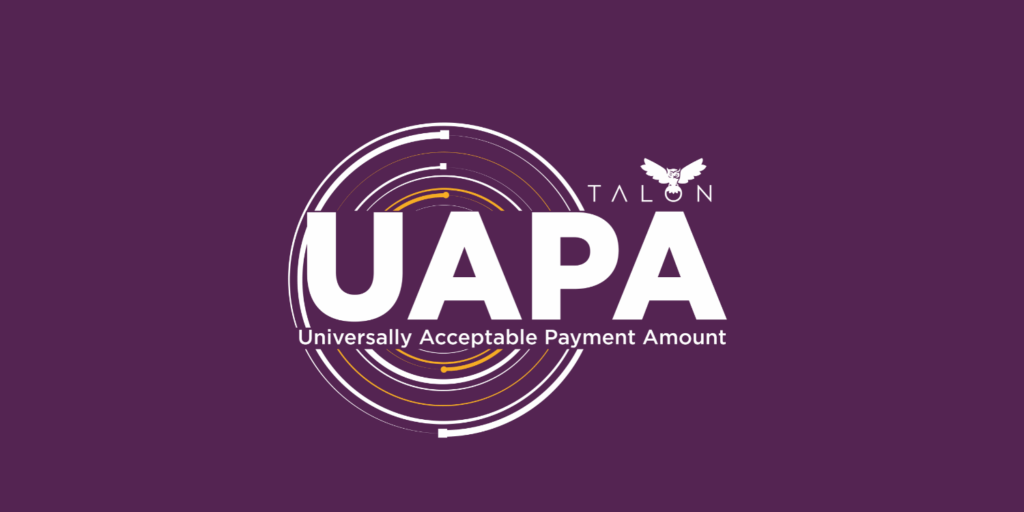
Reference-Based Pricing (RBP) has long been positioned as a solution to rising healthcare costs by anchoring reimbursements to a benchmark of Medicare. While it can generate near-term savings, RBP is plagued by volatility, provider abrasion, member balance billing, and administrative overhead. TALON’s Universally Acceptable Payment Amount (UAPA) offers a more sustainable alternative.
UAPA is a market-referenced, commercially validated pricing methodology that delivers predictable payments aligned with providers’ accepted commercial rates. The result: fewer disputes, reduced member risk, improved provider cooperation, and a more stable financial outlook for payers, providers, and self-funded employers.
Definitions and How Each Works
Reference-Based Pricing (RBP)
RBP is a cost-containment strategy in which a health plan sets reimbursement at a benchmark, typically a multiple of Medicare. Providers may accept or contest these payments after the claim is adjudicated.
- Basis of pricing: Medicare benchmark (e.g., 140%–200%)
- Timing: Post-service, after claim submission
- Variability: High; depends on provider acceptance
- Provider dispute potential: Significant; frequent appeals or negotiations
- Member balance-bill exposure: High; members may be billed for the difference
Universally Acceptable Payment Amount (UAPA)
UAPA is TALON’s market-referenced pricing methodology, designed to establish a pre-accepted, commercially aligned payment amount. Using transparent negotiated rate intelligence, UAPA determines the amount most broadly acceptable to providers, ensuring claims are resolved predictably.
- Basis of pricing: Aggregated, weighted commercial payer-negotiated rates specific to the provider-procedure pairing
- Timing: Pre-service aligned, enabling upfront cost certainty
- Variability: Low; payments converge around market norms
- Provider dispute potential: Minimal; grounded in rates providers already accept
- Member balance-bill exposure: Minimal; reduces surprises and disputes
Comparison by Stakeholder
Employers
RBP:
- Savings possible but highly variable; stop-loss carriers often resist coverage for balance bills.
- Litigation and reputational risks grow with member complaints.
- Complex vendor models (legal defense, negotiation firms) add overhead.
UAPA:
- Predictable unit costs and trend management.
- Fewer stop-loss disputes; more stable reinsurance premiums.
- Streamlined administration without legal defense costs.
What this means: Employers can control costs without trading employee satisfaction or incurring legal risk.
Employees/Members
RBP:
- Exposed to balance billing and potential collections.
- Anxiety and friction at the point of service.
- Appeals and disputes create dissatisfaction and erode trust.
UAPA:
- Protected from balance billing through provider-aligned payments.
- Smooth access to care with reduced point-of-service conflicts.
- Transparency supports better decision-making and satisfaction.
What this means: Members experience predictability, peace of mind, and a better benefits experience.
Providers
RBP:
- Payments may be far below accepted commercial norms.
- High administrative burden to dispute or negotiate.
- Disincentive to see plan members; strained network relationships.
UAPA:
- Payments mirror amounts broadly accepted from commercial payers.
- Reduced appeals and negotiations; faster reimbursement.
- Greater willingness to work with plans and members.
What this means: UAPA builds collaboration and preserves provider relationships.
Compliance and Risk Considerations
RBP’s reliance on post-service underpayment frequently results in balance billing disputes—an area under increasing scrutiny from regulators and state legislatures. While the No Surprises Act mitigates some out-of-network scenarios, it does not eliminate member risk in RBP models.
By contrast, UAPA aligns with the spirit of federal price transparency initiatives. By grounding payments in transparent commercial rates, UAPA minimizes post-claim disputes and mitigates compliance risk, while protecting members from financial harm.
Illustrative Financial Scenario (illustrative only)
Service: Outpatient MRI
- Billed charge: $3,000
- RBP payment (150% Medicare): $1,050
- Member liability risk: $1,950 (if provider balance bills)
- High likelihood of provider dispute
- UAPA payment (market-aligned): $1,400
- Member liability risk: $0 (provider accepts)
- Minimal dispute; claim closes cleanly
Why UAPA Is Superior for Payers, Providers, and Patients
- Predictable Costs – Market-based rates reduce variance, improving actuarial accuracy and stop-loss confidence.
- Member Protection – Minimized balance billing enhances satisfaction, retention, and brand reputation.
- Provider Alignment – Payments rooted in accepted commercial rates reduce disputes and foster cooperation.
- Administrative Efficiency – Eliminates costly appeals and legal defense services common in RBP.
- Compliance Posture – Transparent, market-referenced approach aligns with evolving regulatory frameworks.
In summary: UAPA delivers cost predictability, member protection, provider alignment, administrative efficiency, and regulatory readiness.
Objections and Rebuttals
- “RBP delivers deeper discounts.”
Rebuttal: Discounts are meaningless if offset by litigation, disputes, and stop-loss exposure. UAPA balances savings with sustainability. - “Providers won’t accept UAPA.”
Rebuttal: UAPA is derived from rates providers already accept from all contracted commercial payers, ensuring alignment. - “Implementation is complex.”
Rebuttal: UAPA integrates with existing claims workflows and requires less vendor management than RBP. - “UAPA reduces negotiating leverage.”
Rebuttal: UAPA establishes fairness and predictability. It doesn’t eliminate leverage; it reduces friction.
Payers and self-funded employers face a choice: keep wrestling with the disputes and volatility of RBP, or move toward sustainable, market-aligned savings with UAPA. TALON’s Universally Acceptable Payment Amount delivers a future where payers, providers, and members are aligned around fair, predictable payments.
Schedule a demo or request a modeling assessment today to see how UAPA can transform your cost-containment strategy.
